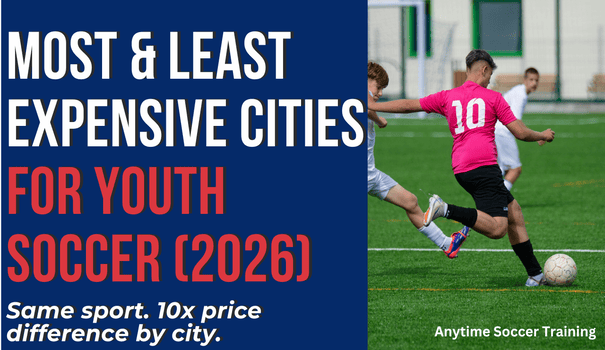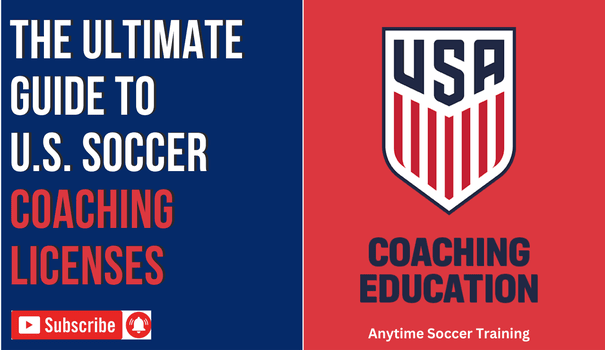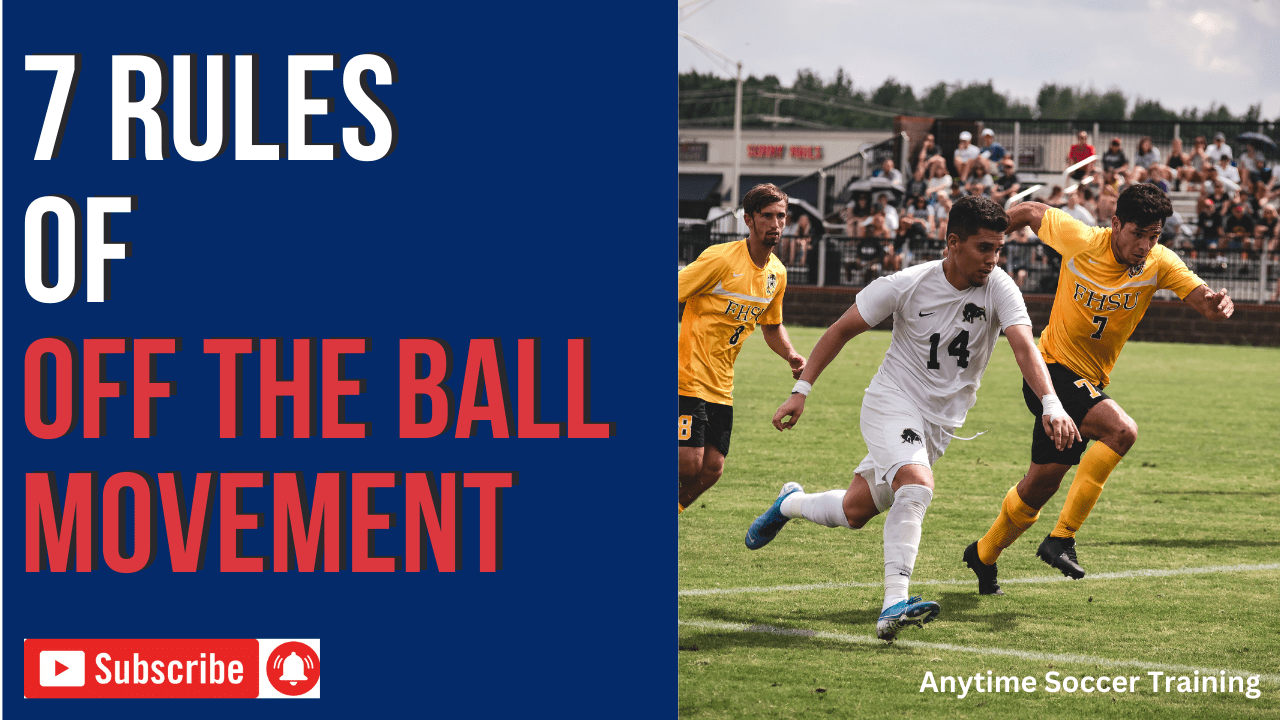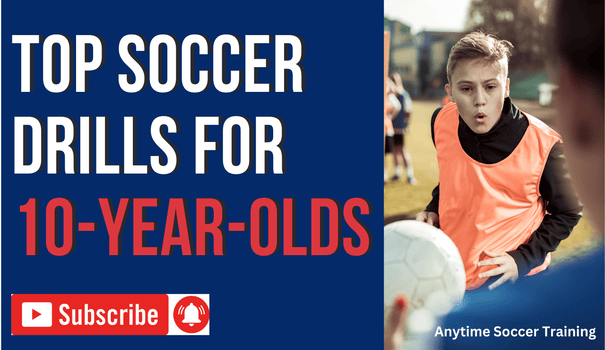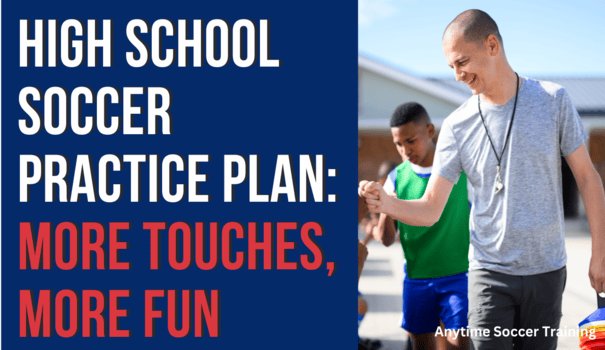
When I started coaching a JV soccer team, I promised myself a few things. My key strategic principles are simple:
- My players should get more touches than other teams.
- They should be engaged in real, relevant football actions.
- And most importantly, they should have fun.
But here’s the ironic part. To create an environment that’s fun, fast, and engaging, I had to steal something from the pros: a culture of discipline and high expectations.
That’s the foundation. And from there, I built a structure that looks pretty much the same every session. I don’t waste time reinventing the wheel or over-explaining drills. The kids know the flow, I just swap out the exercises and adjust the coaching points.
Essential Equipment Every Coach Needs
Before we begin, remember you don’t need fancy gear to run a sharp session, but there are a few essentials that make life easier and keep things efficient:
- Pennies/Bibs – Quick team splits without confusion.
- Soccer Balls – Enough for every player to stay active.
- Training Ball Bag – To haul balls and cones in one trip.
- Cones & Poles – Simple but versatile for countless drills.
- Tactical Whiteboard – Great for explaining formations and set plays fast.
- Bluetooth Speaker – Perfect for running Anytime Soccer Training follow-along sessions.
- Warm Coaching Coat – When you’re standing on the sideline in bad weather, this is non-negotiable.
The Framework That Shapes Every Session
Here’s how I run things on a typical two-hour JV practice:
1. Start With Tag
We always open with a game of tag. Kids love it. It gets their bodies moving, their energy up, and there are endless variations. I usually do one round without the ball and one with dribbling. The best part?
We don’t need to wait on late arrivals—tag works with whoever’s there.
2. 25 Minutes of Unopposed Technical Training
This part has been a game-changer. I use Anytime Soccer Training because it covers all the core technical areas—juggling, ball mastery, dribbling drills, and partner passing—and the videos are 100% follow-along.
I bring a Bluetooth speaker, so the kids don’t stare at a phone. They just listen to the cues, almost like a dance class.
The stacking system in the app makes it smooth—each move is a slight variation of the last, so I don’t waste time explaining or demoing every single drill. That’s 25 straight minutes of focused touches.
While they’re working, I’m already setting up the next station.
3. Structured Passing Patterns
Next, we move into passing patterns that emphasize first touch, scanning, and field awareness.
The drills are simple but consistent, which lets me teach a lot of coaching points without confusing them with too much complexity.
4. Rondos (Small to Large)
After a quick water break, we hit the rondos. I start small—3v1, 4v1, 5v2—and then expand into bigger rondo games.
These are gold for teaching principles of play: penetration, playing wide, transitions, or even finishing.
5. Spanish-Style Finishing Drill
I love keeping finishing game-like. Instead of lining up kids for endless shooting drills, I run Spanish-style exercises that combine passing with an element of opposition.
Simple, fast, and lots of reps without overexplaining.
6. Small-Sided Games With Transitions
Now we go competitive. We’ll run 1v1s that flow into 2v2s, then 3v3s. These create natural transitions between attack and defense, force quick decisions, and keep kids on their toes.
I’ll often add a constraint—like focusing on wide play or switching the point of attack.
7. Full Scrimmage With Constraints
Toward the end, we open it up to a larger scrimmage, often with a twist: limited touches, man-marking, or scoring by hitting certain zones.
These constraints highlight the day’s teaching point while still letting them play.
8. Free Play + Cool Down
Finally, we reward them. Ten minutes of free play—no restrictions. Just soccer. Then a five-minute cooldown and closing remarks.
That’s our rhythm. Every session.
Why This Works
The kids know what’s coming. The framework is familiar, which means less wasted time explaining and more time playing. I just swap in new drills or tweak the constraints. And the culture we’ve built—discipline, focus, and active listening—makes everything more efficient.
Time-Saving Hacks I Swear By
Here are some of the small things that make a big difference:
- Team Water Bottles: No wasted time running to fountains. Bottles are right on the sideline.
- Equipment Managers: Five players each week are responsible for setup and collection. Balls must touch each other when collected—no chaos.
- Jog Between Drills: Walking is wasted time. Jogging keeps the rhythm.
- Staggered Water Breaks: Half the team drinks while the other half finishes the drill, then they switch.
- Active Listening: We hammer this. The faster they tune in, the faster we play.
- Similar Drills, New Variations: Instead of brand-new drills every practice, we repeat core ones with small tweaks. The kids master the structure, and I can layer in more coaching points.
- Clear Expectations: I wrote out team standards and had everyone sign them—accountability matters.
- Coach Preparedness: I show up 15 minutes early so the field is set up before players arrive—no wasted time.
Budget Coaching Gear
- Coaching Clipboard with Dry-Erase Board: Check it out on Amazon
- Set of Training Cones: View on Amazon
- Portable Pop-Up Goals: Shop on Amazon
- Agility Ladder and Training Hurdles: See on Amazon
- Whistle with Lanyard: Get it on Amazon
Having this equipment on hand isn’t about looking professional—it’s about saving time and creating consistency across sessions.
Tools That Help Me Stay Organized
Alongside Anytime Soccer Training, which handles all of our unopposed technical work, I also highly recommend a subscription to Football DNA.
It’s a fantastic coaching website with structured session plans, activities, and progressions that you can implement across the season.
I lean on it for ideas that align with my framework, and it’s saved me countless hours of planning.
Between Anytime Soccer Training and Football DNA, I’ve got both ends covered: at-home skill work for players and structured seasonal planning for coaches.
Final Thoughts
Our sessions are two hours long, but they fly by. The key isn’t running fancy drills—it’s the culture and the structure. Fun, discipline, and repetition combine to create growth.
And if you’re a coach looking for ways to help your players get more touches outside of practice, I can’t recommend Anytime Soccer Training enough.
With over 5,000 follow-along videos, it’s the only program that even lets you assign homework to individual players or your whole team.
Book a free demo today and see how it can help your players build skill and confidence at home.


